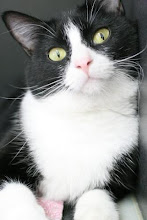
On Thursday, March 25th FCCR had the pleasure of hosting an educational hour at the shelter for 30 students from the Lab School for Creative Learning. The kids were FANTASTIC and had a great time. They learned what our shelter was for, why animals end up in shelters, what it means to spay/neuter and why it is important, and what it means to be kind to animals.
The kids were so energized and excited to share stories about their own pets and how they have been kind to animals in the past. They were great with the kitties and got to help serve the shelter cats canned food, and also got to play with them.
Before coming to FCCR the children collected supplies like paper towels, litter, and even money to donate. They also made homemade cat toys.

Although we were initially a little nervous about having such a large group of kids in our tiny facility, things went off without a hitch. We had such a fabulous time that we are hoping that this is something we can offer to other student groups that might be interested in visiting.
We greatly appreciated the teachers, Susan & Karen, for thinking of bringing the kids to FCCR. It is so important that we educate our next generation about the pet overpopulaton problem.
The kids were so energized and excited to share stories about their own pets and how they have been kind to animals in the past. They were great with the kitties and got to help serve the shelter cats canned food, and also got to play with them.
Before coming to FCCR the children collected supplies like paper towels, litter, and even money to donate. They also made homemade cat toys.

Although we were initially a little nervous about having such a large group of kids in our tiny facility, things went off without a hitch. We had such a fabulous time that we are hoping that this is something we can offer to other student groups that might be interested in visiting.
We greatly appreciated the teachers, Susan & Karen, for thinking of bringing the kids to FCCR. It is so important that we educate our next generation about the pet overpopulaton problem.






